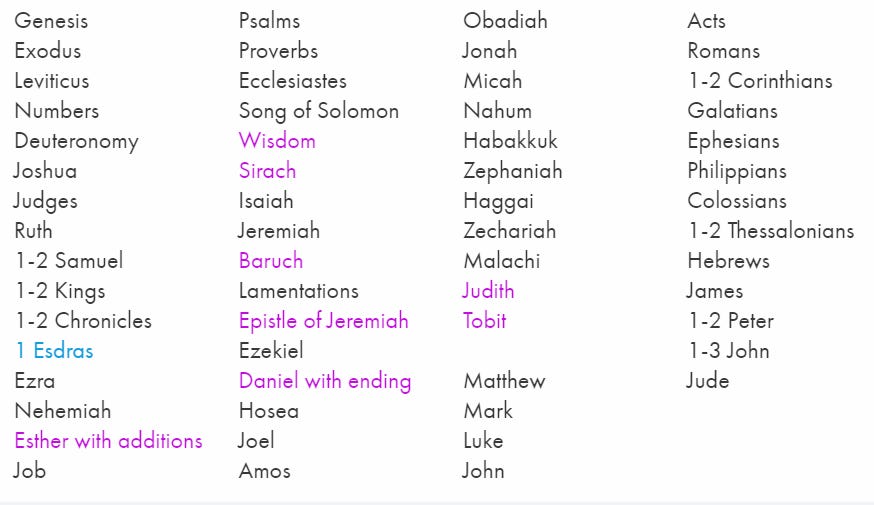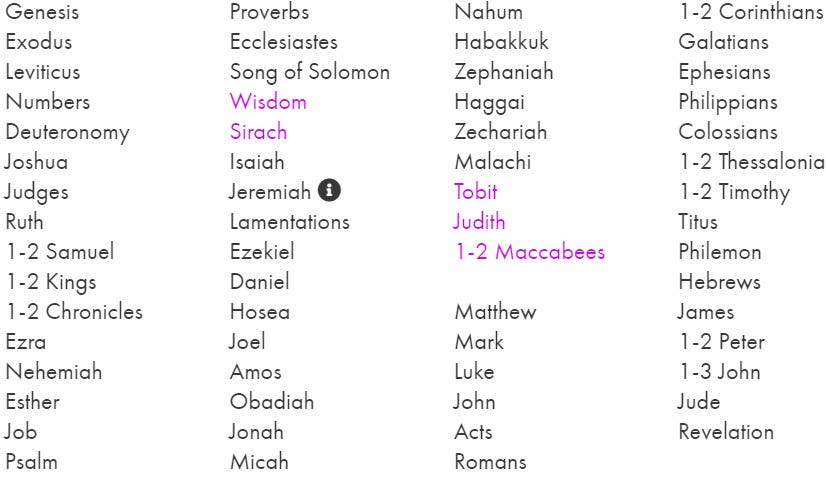Further Canon Talk: Do You Even Know Where Your Bible Came From?
The odds are you don't even know why your bible is the way it is
In my last post/article I went into some detail about the purposes of the Old Testament and the New Testament, how they differ, how they differ in genre, and how we should be reading them in light of those things.
Now, by no means was that exhaustive, I would categorize that as a brushing or a feather in the wind so to speak. There was much more to say, in fact, I feel it’s important to compound the notion that I mentioned about not having all the books and how “infallible” canon is something that burdens Scripture uniquely.
For a quick example before diving into how our own Scripture quotes other Scripture we no longer have…I’d like to point out that we have multiple early manuscripts of a canon compiled within 50-100 years of the writings of the Apostles where 73 books of the Bible are mentioned.
What’s interesting is that we have various canon lists appearing for the Old Testament very early on that were found with other writings from early church fathers. For example in Bryennios List we see the following canon:
and the earliest New Testament canon Fragment is from the Muratorian:
Then we have Origen’s list and then shortly after the Codex Vaticanus:
This is possibly the oldest extant copy of what was intended to be a full bible. It is made from vellum, a high-quality parchment, and resides at the Vatican Library. It has substantial textual differences from the Textus Receptus, which was a later Greek text of the New Testament. Westcott & Hort relied significantly on this codex when producing The New Testament in Original Greek in 1881. The Codex Vaticanus is an example of an early Greek manuscript that does not contain certain New Testament passages, such as Pericope Adulterae: the woman caught in adultery in John 8.
Then in 630 AD, we have a final summarization of what took place the 500 years prior on the canonization of the Scriptures. For example, one of the last used lists prior to this was 397 AD given to us by Augustine:
The 630 AD Recap of De Ecclesiasticis Officiis is identical to Augustines canon above.
It wasn’t until 1534 AD…nearly 1,000+ years later that Luther decided to part from the church and create his own canon list upon his own authority:
He decided what was Apocrypha and what was a “lesser” testament. Which can be seen below in the Apocrypha section. In reply to this, the Historical Church had The Council of Trent which decreed that Augustine’s list summarized correctly that of the Canon to be used and one man — Luther — didn’t have any standing or authority to pick out books that he didn’t like and liked.
Yet, millions of Christians today use Luther’s bible today without knowing where their own Bible comes from. Every Protestant (99% of my Bibles) is Luther’s canon which was based upon his own understanding and his own accord. He made the claim that “it aligned with what the Jews held to be canon” but in my next article I’ll show you why this is a fallacious and strange plea.
Therefore, if your Bible only has 66 books we can see that it’s not only missing books that were historically quoted, used, and canonized by Early Church Fathers like Origen, Augustine, and Cyril [eventually The Council of Trent] but it’s based upon one single man’s opinion named Martin Luther.
Next Post Coming: The Books of the Bible Mentioned in the Bible that Are Now Lost







